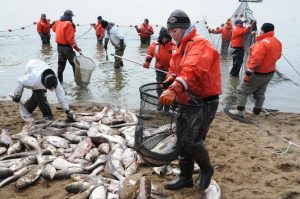According to the Scientific American, invasive species are “any species introduced by human intervention that has caused economic or ecological damage by growing superabundant in a nonnative habitat2.” As invasive species proliferate and pose risks to their new environments, a new gastronomic trend has arisen – invasivorism.
What is Invasivorism?
Put simply, invasivorism is the deliberate consumption of invasive species as a means to combat their overpopulation and the damages or risks that they pose to an environment or area. Joe Roman was a leader in promoting invasivorism as it was first introduced in his 2004 Audubon article “Eat the Invaders”2. Following his proposal, invasivorism was lucky enough to gain traction in the ‘sweet spot’ as interest in “food ethics, locavorism, and foraging” grew among the public2. As time progressed, so did interest in the movement. For example, Miya’s, a sushi restaurant in New Haven, CT, introduced an invasive species menu coordinated by Chef Bun Lai2. In 2011, New York City saw the an Invasive Species Banquet, and 22,000 tons of Asian carp were sold to China for $20 million in 2012. Asian carp is an invasive species in Illinois, but is commonly eaten in China2.

What can Invasivorism do for Florida?
Florida is home to a number of invasive species, such as lionfish, Burmese python, and feral hogs, or plants such as hydrilla1. The management of invasive plant species costs the state over $100 million annually, and management of invasive animal species has the potential to cost even more1.
While current strategy focuses on detecting, preventing, and managing invasions, Florida could benefit from invasivorism. Species such as lionfish and feral hogs are popular on plates in other countries and states, but not yet Florida.

Sources:
1. N.A. “Stopping the Spread of Invasive Species”. The Nature Conservancy. 11 September 2018. https://www.nature.org/en-us/about-us/where-we-work/united-states/florida/stories-in-florida/combating-invasive-species-in-florida/
2. Snyder, M. “Can We Really Eat Invasive Species into Submission?”. Scientific American. 19 May 2017. https://www.scientificamerican.com/article/can-we-really-eat-invasive-species-into-submission/








